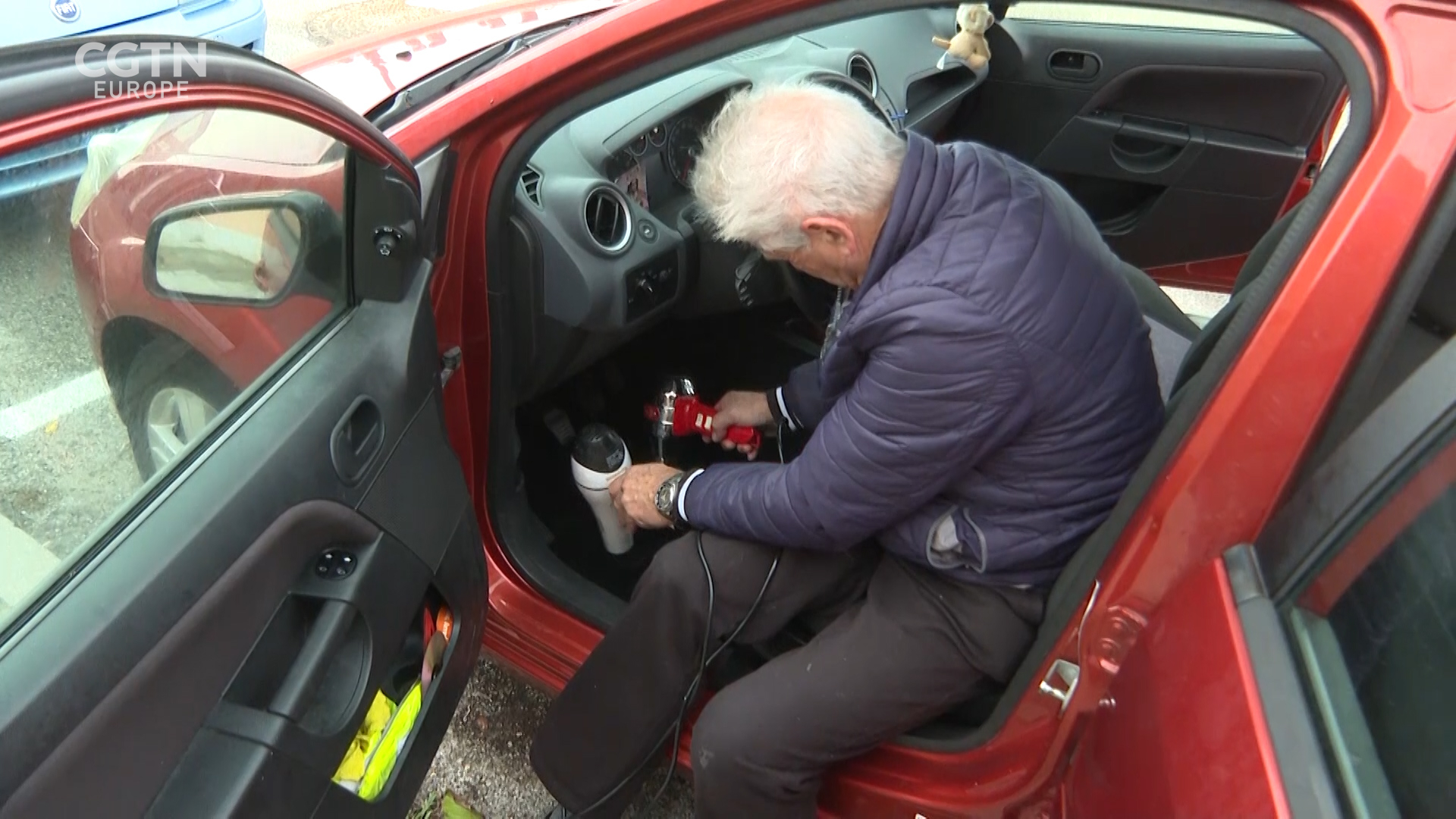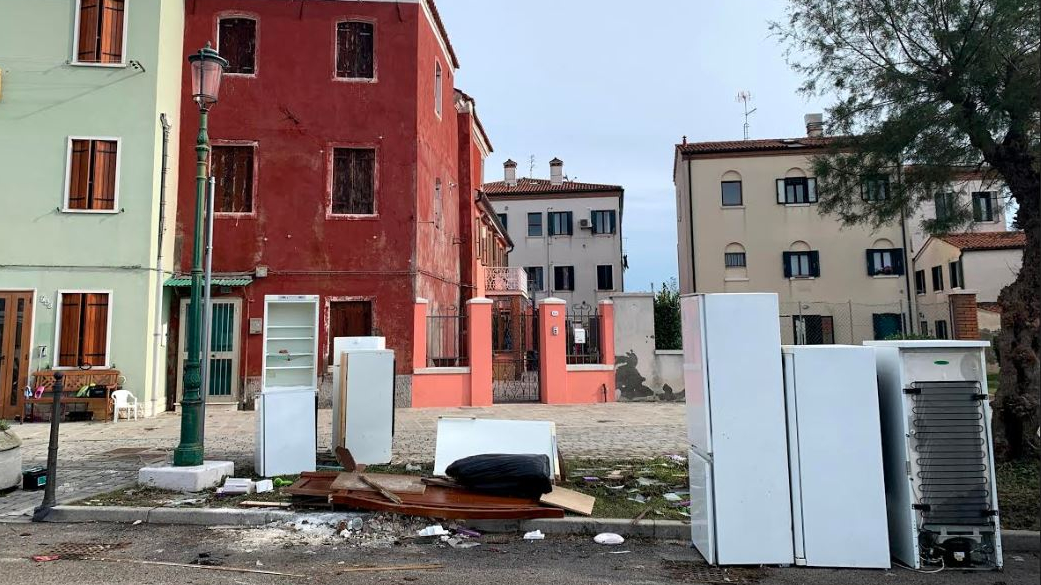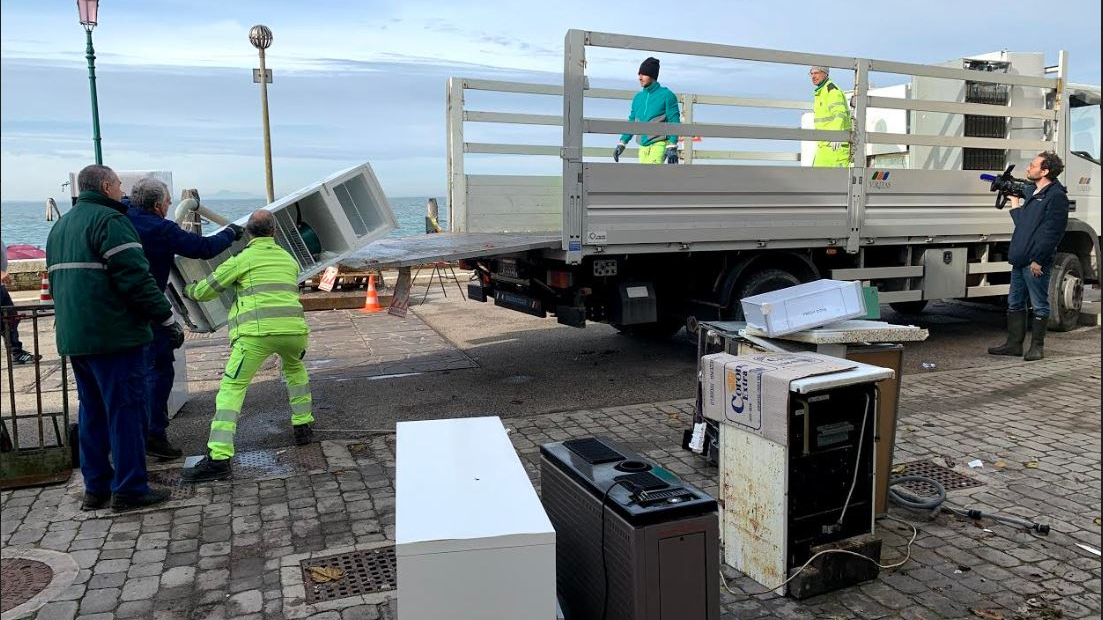02:54

Over the past week, all eyes have been on the city of Venice and the damage caused by flooding to some its most treasured locations, such as St Mark's Basilica, but some of the worst affected areas exist on other islands in the Venetian lagoon.
Pellestrina, a small strip of land just 11 kilometers long and 500 meters wide, was almost completely submerged by the wave of record high tides. Two people died and many of its 3,500 residents lost everything.
Ana Maria Vianello, 76, was born in Pellestrina. Her home was ruined after almost 60 centimeters of water flooded it. She said: "My washing machine broke, [so did] my freezer and refrigerator. My kitchen [was] destroyed. You should have seen how my house was before. I have lost my life's work and for nothing. For nothing, because they could have avoided this."
Hundreds of electronic appliances that could not be saved are still being collected as part of the clean-up operation. A week on from the floods and life on the island is at a standstill. Shops, bars and restaurants remain closed as owners try to repair the destruction.
Maddalena Ballarin, 57, runs a restaurant on the seafront. She said the authorities have left people here stranded.
"Pellestrina Italians are very angry. They are angry because they feel abandoned. Politicians came here last week and all they do is talk, talk, talk, promise, promise, promise. But they only really care about their own interests," she said.

Destroyed kitchen appliances are still waiting to be removed (Credit: CGTN)
Destroyed kitchen appliances are still waiting to be removed (Credit: CGTN)
Maddalena's husband feels the needs of people living in Pellestrina come second to the area's main city of Venice and its well-known tourist attractions. He said: "Pellestrina has been abandoned by Venice authorities, because what really matters to them is Venice. We are a small community but even if we are small, we still need to be considered."
Blame is also being attributed to the failure of the MOSE project. The system consists of 78 metal barriers, built beneath the sea, that are designed to rise up from the depths during high tides and protect the lagoon city of Venice.
It was originally conceived in the 1980s and construction began in 2003 but decades on, MOSE remains unfinished. Dogged by corruption and scandal and plagued with problems due to its experimental nature, it isn't expected to be fully operational until at least 2021.
Read More: What's happened to Venice's MOSE flood defences?
Maddalena Ballarin said residents in Pellestrina have no faith in the project, even when it does reach completion, leading many to contemplate their future. "People here are afraid, they are scared because they don't believe in the Mose project. The Mose project is very old. There is a very old saying by people on this island that you can fight fire, but you can't fight water and that is true. I want to stay here, I was born here and I love it. So I don't want to leave," she said.

The flood caused more than $100,000 worth of damage (Credit: CGTN)
The flood caused more than $100,000 worth of damage (Credit: CGTN)
The Mayor of Venice said he wants to press on with Mose, claiming if it was completed it would have defended the area.
Yet the quickening rate of climate change poses more problems for the project. When it was first designed, the predicted rise in global temperatures and sea levels were lower than experts now predict. Meaning solutions may have to be found to save not only the city, but also other Venetian islands, from devastation.
Jane da Mosto is an environmental scientist and executive director of We Are Venice. She says there is still time to save the city and the lagoon.
"There's tons of examples of functioning flood barriers around the world, so it is perfectly possible to protect the city with them but they need to get serious about doing that. I feel a mixture of sadness and utter fury as our children should be able to grow up here," she said.
"Venice is such a precious resource for humanity but it depends on a very delicate, careful and equal equilibrium between the lagoon ecosystem, the sea and the living city and they also need to do a lot of work also to restore the salt marshes in the lagoon as they act like a sponge. If there had been six times as much salt marsh in the lagoon, all that water wouldn't have been able to come in as violently.”